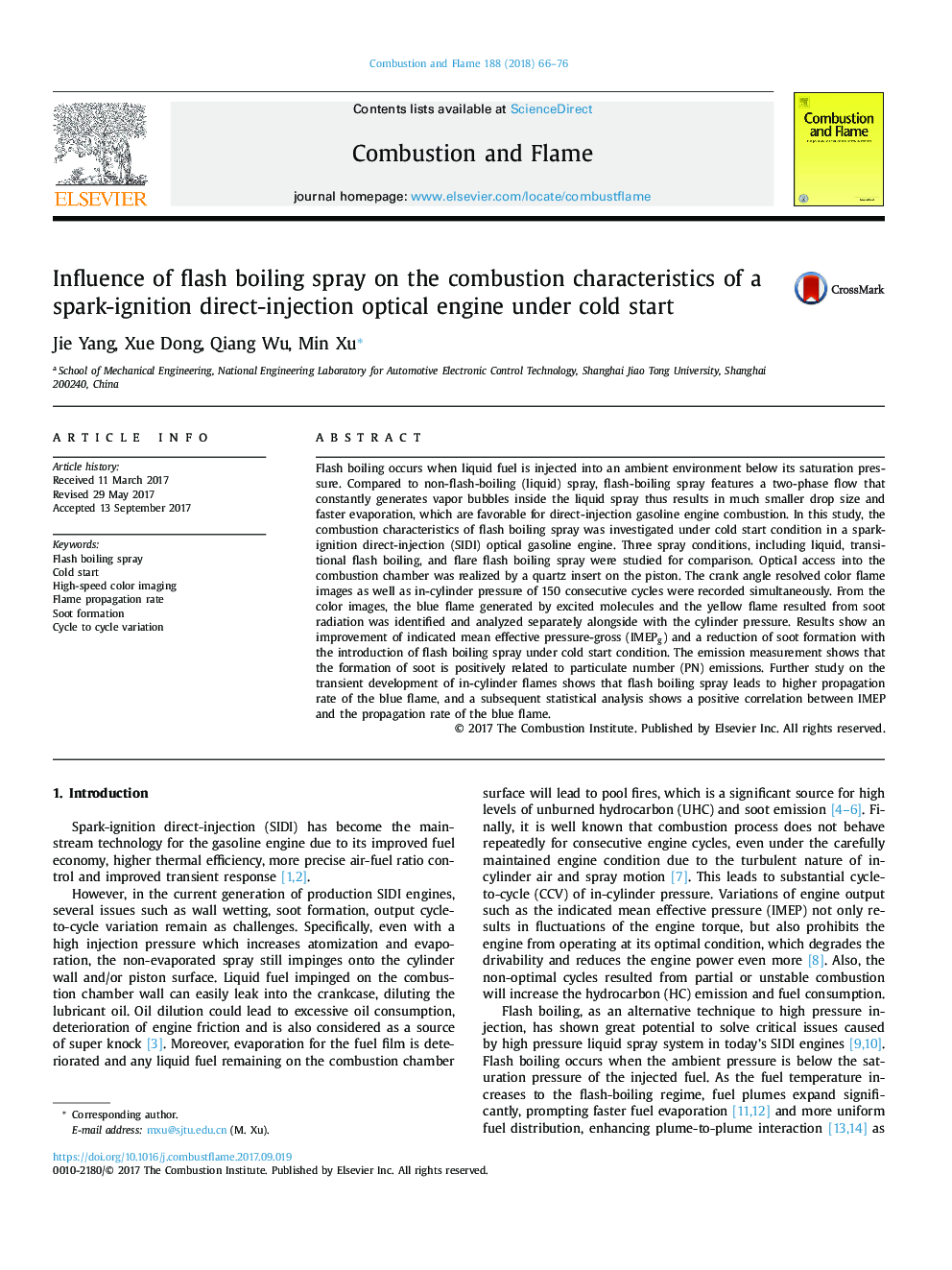| Article ID | Journal | Published Year | Pages | File Type |
|---|---|---|---|---|
| 4764329 | Combustion and Flame | 2018 | 11 Pages |
Abstract
Flash boiling occurs when liquid fuel is injected into an ambient environment below its saturation pressure. Compared to non-flash-boiling (liquid) spray, flash-boiling spray features a two-phase flow that constantly generates vapor bubbles inside the liquid spray thus results in much smaller drop size and faster evaporation, which are favorable for direct-injection gasoline engine combustion. In this study, the combustion characteristics of flash boiling spray was investigated under cold start condition in a spark-ignition direct-injection (SIDI) optical gasoline engine. Three spray conditions, including liquid, transitional flash boiling, and flare flash boiling spray were studied for comparison. Optical access into the combustion chamber was realized by a quartz insert on the piston. The crank angle resolved color flame images as well as in-cylinder pressure of 150 consecutive cycles were recorded simultaneously. From the color images, the blue flame generated by excited molecules and the yellow flame resulted from soot radiation was identified and analyzed separately alongside with the cylinder pressure. Results show an improvement of indicated mean effective pressure-gross (IMEPg) and a reduction of soot formation with the introduction of flash boiling spray under cold start condition. The emission measurement shows that the formation of soot is positively related to particulate number (PN) emissions. Further study on the transient development of in-cylinder flames shows that flash boiling spray leads to higher propagation rate of the blue flame, and a subsequent statistical analysis shows a positive correlation between IMEP and the propagation rate of the blue flame.
Related Topics
Physical Sciences and Engineering
Chemical Engineering
Chemical Engineering (General)
Authors
Yang Jie, Dong Xue, Wu Qiang, Xu Min,
